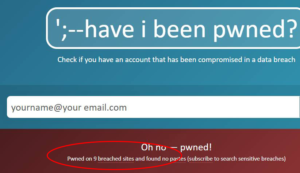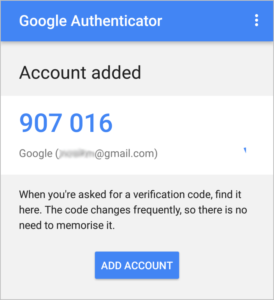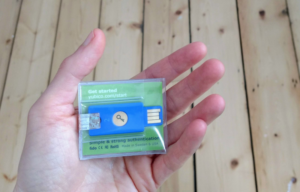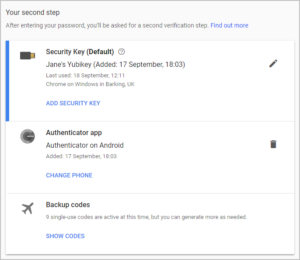Hackers have spent well over 20 years stealing users’ passwords from internet companies.
They’ve almost certainly got yours.
The good news is it’s very easy to make your passwords useless to hackers. All you do is switch on Two-Factor Authentication (2FA).
2FA is a second login layer
It works much like the second lock on your front door. If someone’s stolen or copied your Yale key, that double-lock will keep them out.
A digital double-lock is now vital for protecting your online accounts – email, banking, cloud storage, business collaboration and the rest. It’s up there with anti-malware in the league of essential security measures. And it’s much easier to pick a 2FA method than choose the right anti-malware (our Anti-Malware Protection Reports can help you there).
So 2FA is essential, easy, and doesn’t have to cost a thing. It’s a security no-brainer. So how come hardly anyone uses it?
Join the one per cent elite!
Earlier this year, Google revealed that only 10 per cent of their users have ever bothered setting up 2FA. Just a fraction of those – we estimate around one per cent of all internet users – use the most secure type of 2FA, a USB security key.
In this article we’ll show you how to join that elite one per cent for less than £20. If you’d rather watch a step-by-step demo, here’s our YouTube video.
(This blog reflects the views and research of SE Labs, an independent security testing company. We never use affiliate links.)
Why everyone in your business should use 2FA
You’re not the only person who knows your usernames and passwords. Head over to Have I Been Pwned? and type in your email address to find out how many of your accounts have been hit by hacking attacks.
 |
| A quick (and scary) web search reveals how many times your passwords have fallen prey to hackers |
While you’re digesting those results, here’s a sobering statistic. More than 90 per cent of all login attempts on retail websites aren’t by actual customers, but by hackers using stolen credentials (Shape Security, July 2018).
Nearly everyone has had their passwords stolen. But hardly anyone protects their accounts using 2FA. We’re all leaving our front doors unlocked.
And as hackers plunder more and more big-name services (as well as all those services you’d forgotten you had accounts with), the more chance they have to steal the passwords you use everywhere.
This is why you must never using the same password twice. Don’t be tempted to use a pattern to help you remember them, either (‘123amazon’, ‘123google’ and so on). Hackers decode that stuff for breakfast. We’re also not keen on password managers. They’re Target Number One for hackers.
Instead, store your passwords where no-one can find them (not online!) and deadlock your accounts using 2FA. It’s the only way to make them hack-proof.
Why a USB key is the best way to lock your accounts
The ‘memorable information’ you have to enter when logging into your online bank account is a watered-down version of 2FA. Hackers can easily create spoof login pages that fool you into handing over all your info, as demonstrated in our NatWest phishing attack video.
Proper 2FA methods are much tougher to crack. They involve more than one device, so a hacker can’t simply ransack your computer and steal all pertinent data. Without the separate device, your passwords are useless to them.
Use more than one 2FA method if offered. This double-locks your double-locks – and also gives you another way into your account if one method fails. See our 2FA YouTube video for a step-by-step guide to doing this for your Google account.
Here’s a quick run-through of your options, starting with the most basic.
Google prompt
How it works: Tap your Android screen to confirm your identity.
Pros and cons: Very quick and easy, but only works with Google accounts and Android devices. Useful as a backup option.
SMS code
How it works: You’re texted (and/or voice-messaged) a PIN code to enter after your usual login.
Pros and cons: Authentication is split between two devices. It works on any mobile phone at no additional cost. But it can be slow, and the code may appear on your lock screen.
Authentication app
How it works: A free app, such as Google Authenticator, generates a unique numerical security code that you then enter on your PC.
Pros and cons: Faster and more reliable than SMS, and arguably more secure, but you’ll need a smartphone (Android or iOS).
 |
| Authenticate your logins with a code that’s sent to your phone (and only your phone) |
Backup codes
How it works: A set of numerical codes that you download and then print or write down – then keep in a safe place. Each code only works once.
Pros and cons: The perfect backup method. No need for a mobile phone. A piece of paper or locally-stored computer file (with disguised filename) is easier to hide from thieves than anything online.
And the most secure 2FA method of all…
USB security key
How it works: You ‘unlock’ your accounts by plugging a unique USB stick (such as this YubiKey) into your computer.
Pros and cons: A whole list of pros. USB keys are great for business security, because your accounts remain locked even if a hacker breaches your phone. They’re convenient: no need to wait for codes then type them in. And they cost very little considering how useful they are. One key costs from £18, and is all you need to deadlock all your accounts. Buy one for all your employees – and clients!
 |
| Give a USB security key to all your employees and clients – their security (and yours) will benefit |
Deadlock your Google account: a 2FA walk-through
Google lets you lock down your entire account, including Gmail and Google Drive, using multiple layers of 2FA (which it calls 2-Step Verification). It’s one of the most secure 2FA configurations you’ll find, and it’s easy to set up.
Here are the basic steps. For a more detailed step-by-step guide, see our YouTube video.
- Order a USB security key. Look for devices described as FIDO (‘Fast IDentity Online’) – here’s a FIDO selection on Amazon – or head straight for the Yubico YubiKey page. Expect to pay from £18 to around £40.
- Go to Google’s 2-Step Verification page, click Get Started then sign into your account. Choose a backup 2FA method, click Security Key, then plug in your unique USB stick. Google automatically registers it to you.
- Choose a second 2FA method such as SMS code, plus a backup method such as a printable code, Google prompt or authenticator app.
- That’s it – welcome to the top one per cent!
 |
| Double-lock your double-locks by choosing more than one 2FA method – and a backup |
Deadlock all your online accounts in minutes
All reputable online services now offer 2FA options. But, as you’ll discover from the searchable database Two Factor Auth, not all services offer the best 2FA options.
For example LinkedIn only offers 2FA via SMS, and doesn’t support authenticator apps or USB security keys – the most secure types of 2FA. Even Microsoft Office 365 doesn’t yet support security keys. We expect better from services aimed at business users.
What’s more, 2FA settings tend to be well buried in account settings. No wonder hardly anyone uses them. Here’s where to click:
- Amazon: Go to Your Account, ‘Login & security’, enter your password again, and then click Edit next to Advanced Security settings.
- Apple: Go to the My Apple ID page then click Security, Two-Factor Authentication.
- Dropbox: Click the Security tab to set up SMS or app authentication. To configure a USB security key, follow Dropbox’s instructions.
- Facebook: Go to ‘Security and login’ in Settings and scroll down to ‘Use two-factor authentication’. Click Edit to get set up.
- LinkedIn: Go to Account Settings then click Turn On to activate SMS authentication.
- Microsoft: Log in, click Security, click the ridiculously small ‘more security options’ link, verify your identity, and then click ‘Set up two-step verification’. Doesn’t yet support USB security keys. Some Microsoft services, such as Xbox 360, still don’t support 2FA at all.
- PayPal: Go to My Profile then click My Settings, Security Key and then Get Security Key. Don’t accept the offer to get a new code texted to you every time you log in, because then a hacker can do it too!
- TeamViewer: Go to the login page, open the menu under your name, click Edit Profile then click Start Activation under the 2FA option. Supports authenticator apps only, not SMS.
- Twitter: Go to ‘Settings and privacy’, Security, then tick ‘Login verification’.
- WhatsApp: In the mobile app tap Settings, Account, ‘Two-step verification’.
 All posts
All posts

